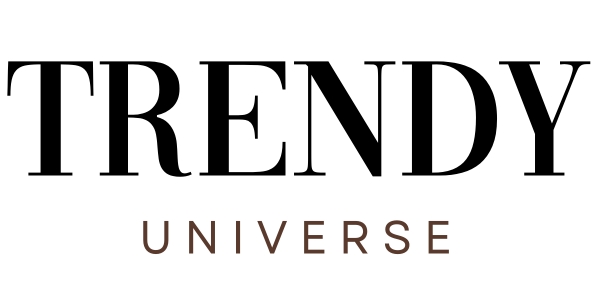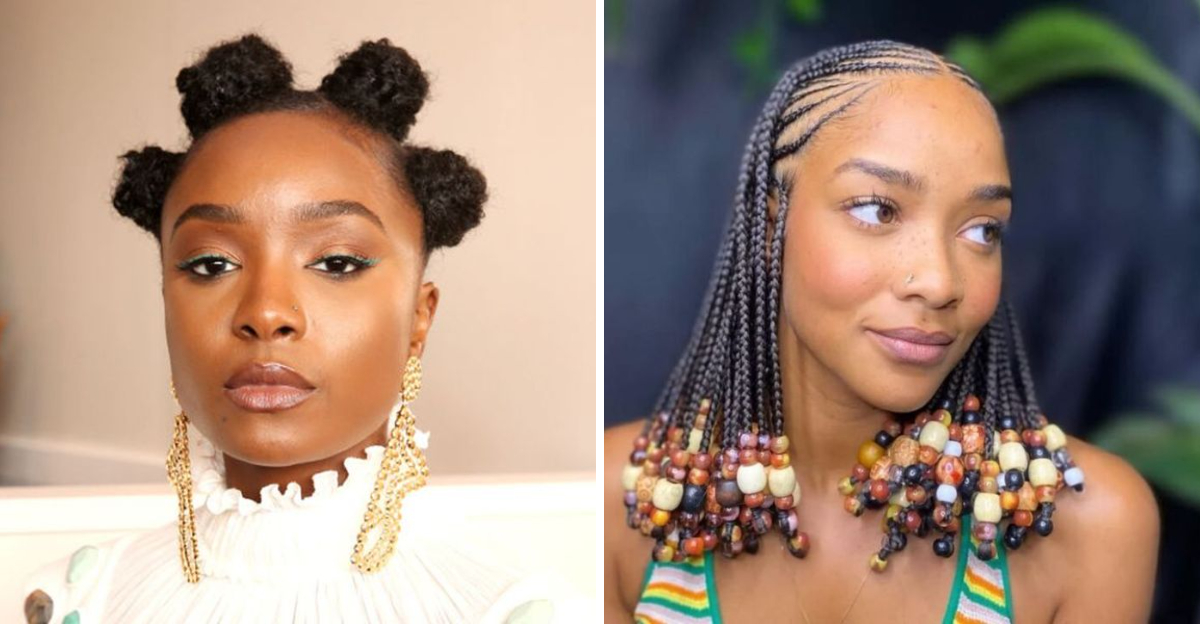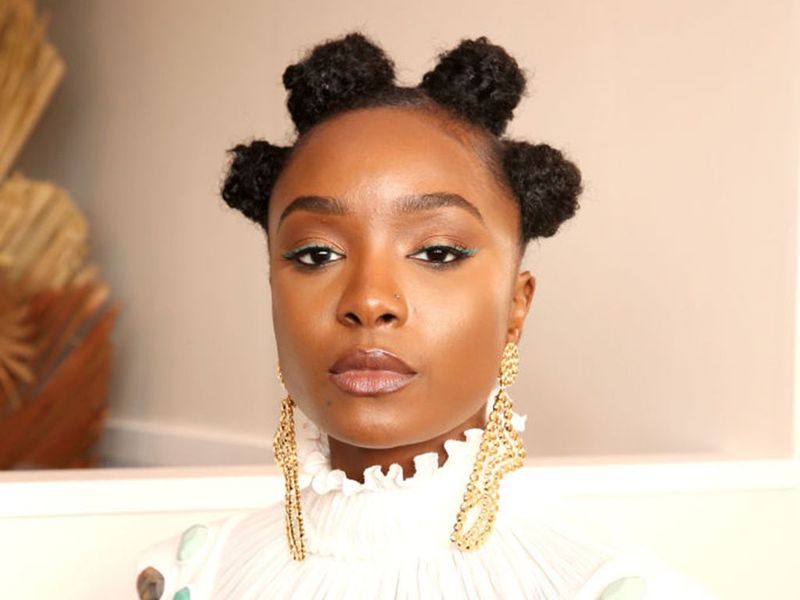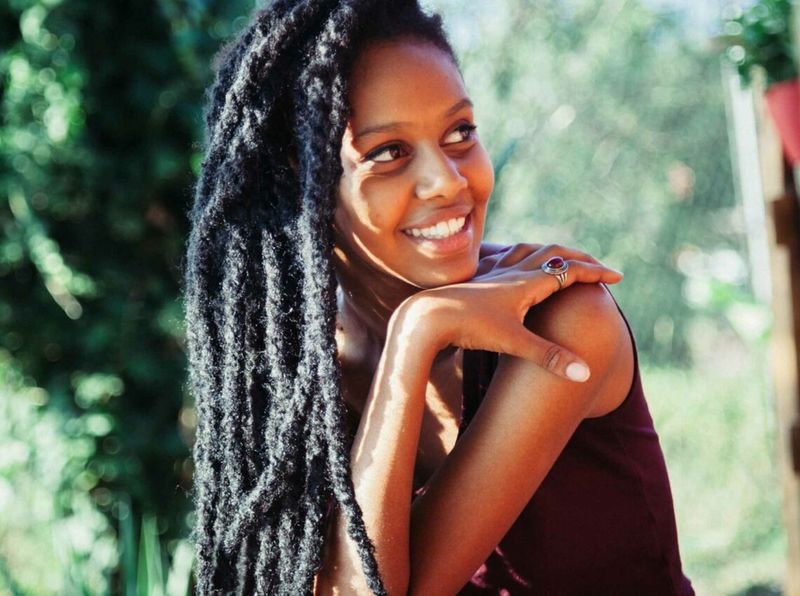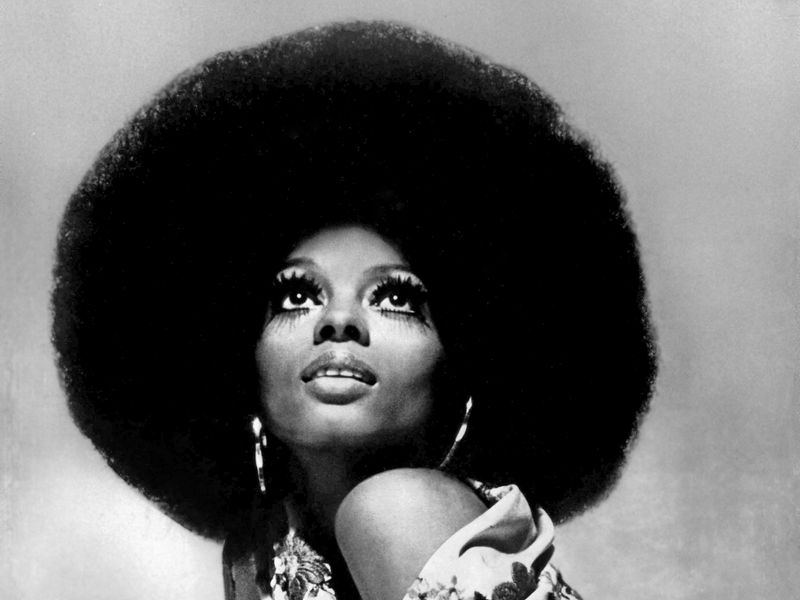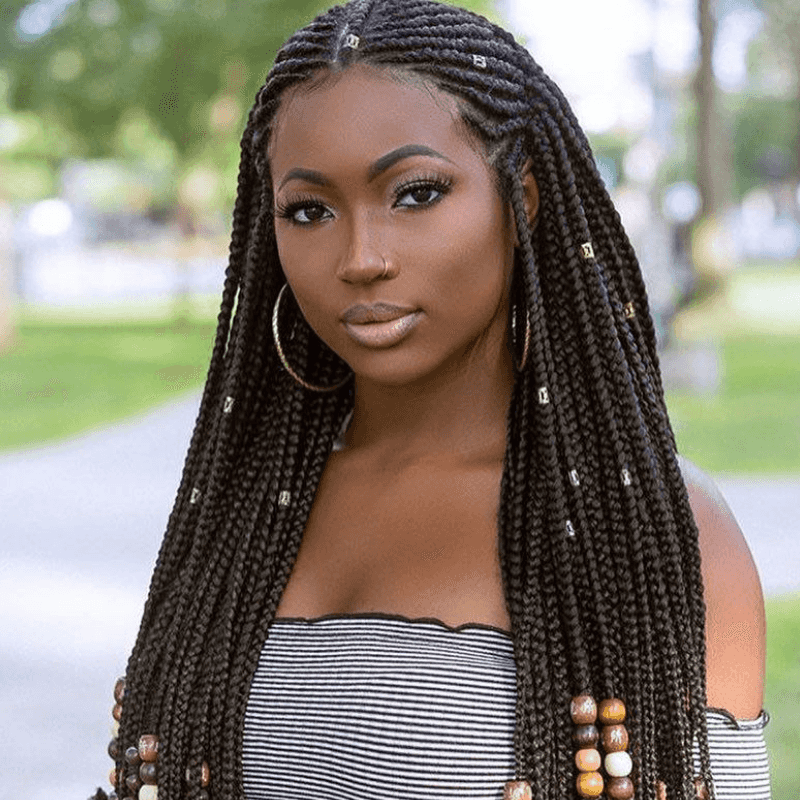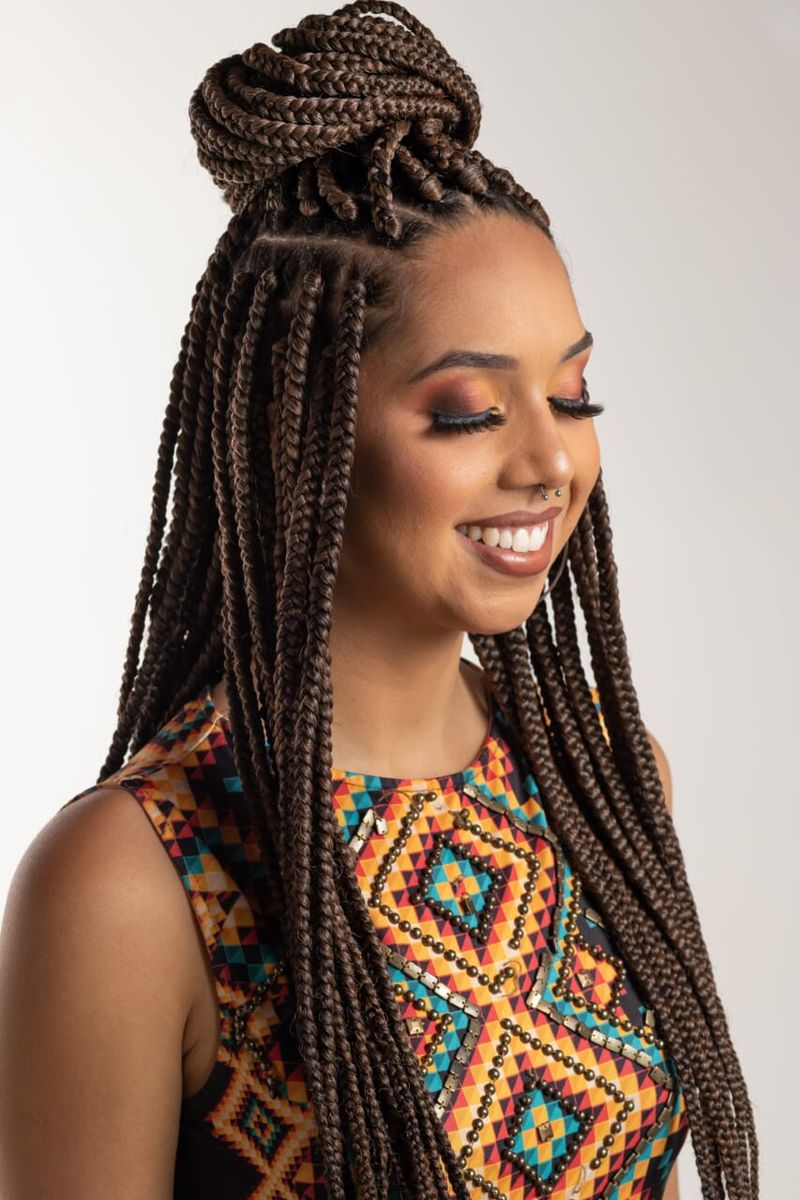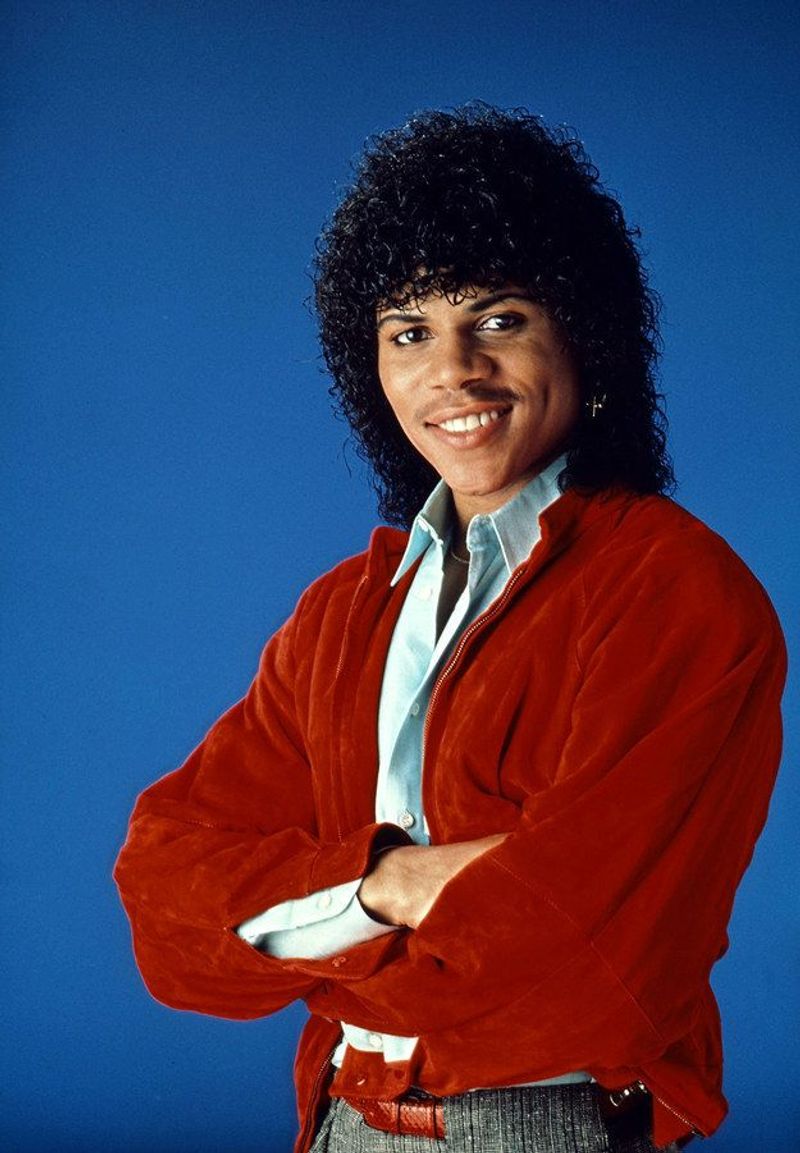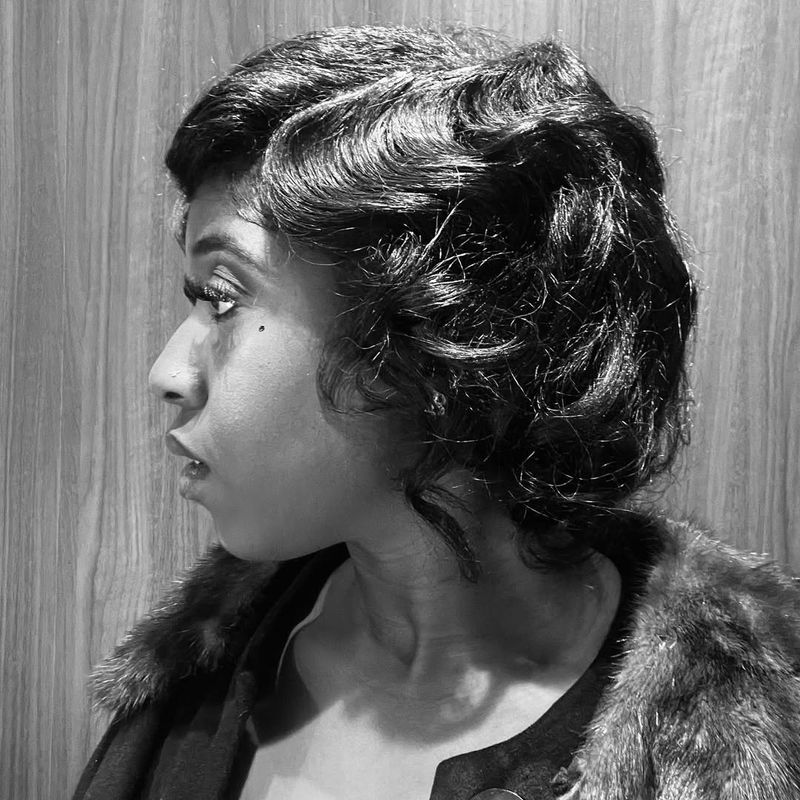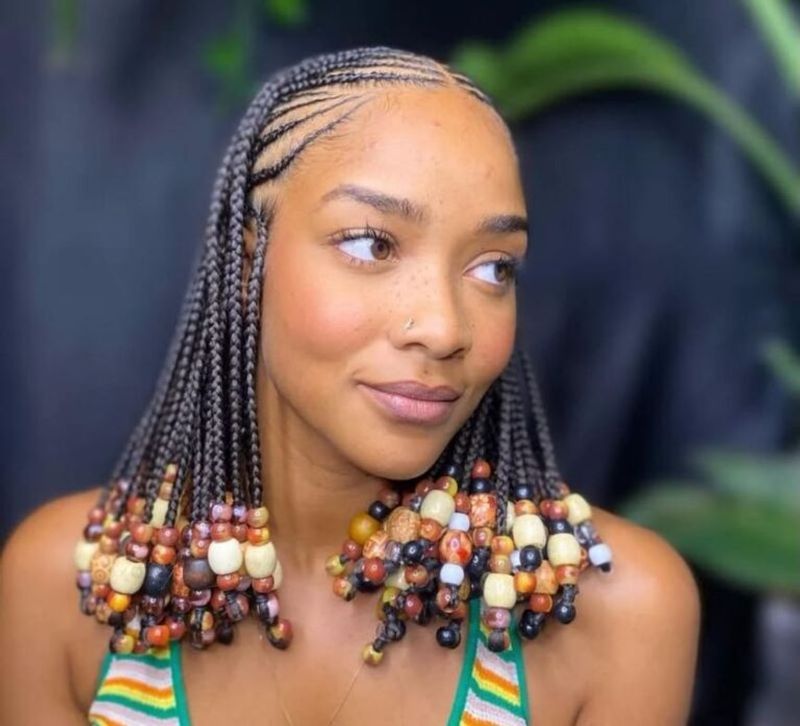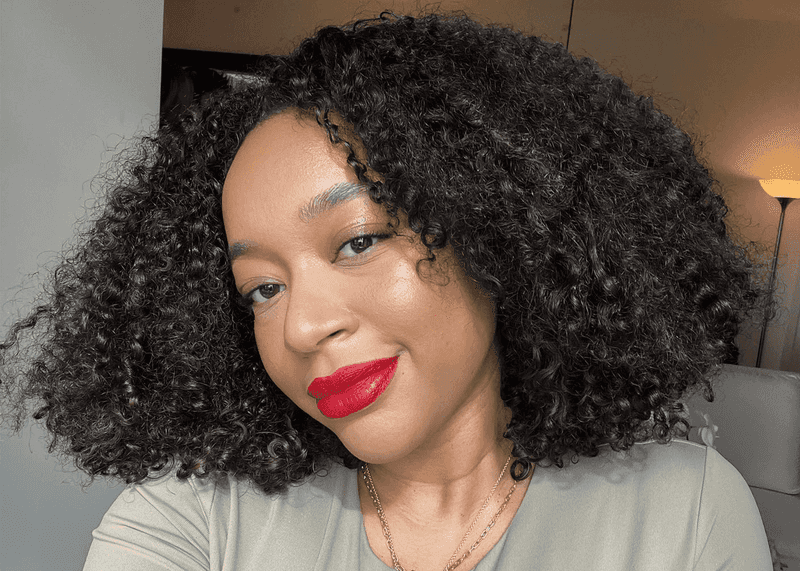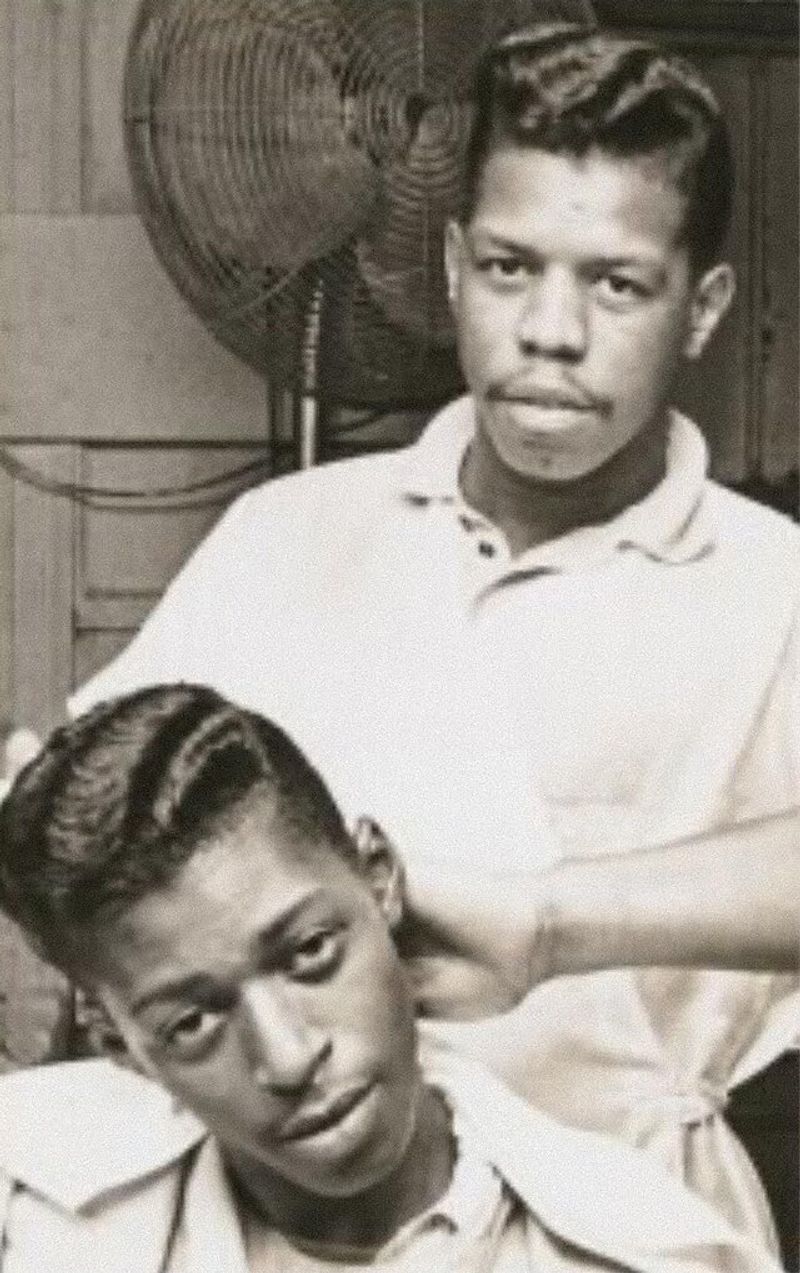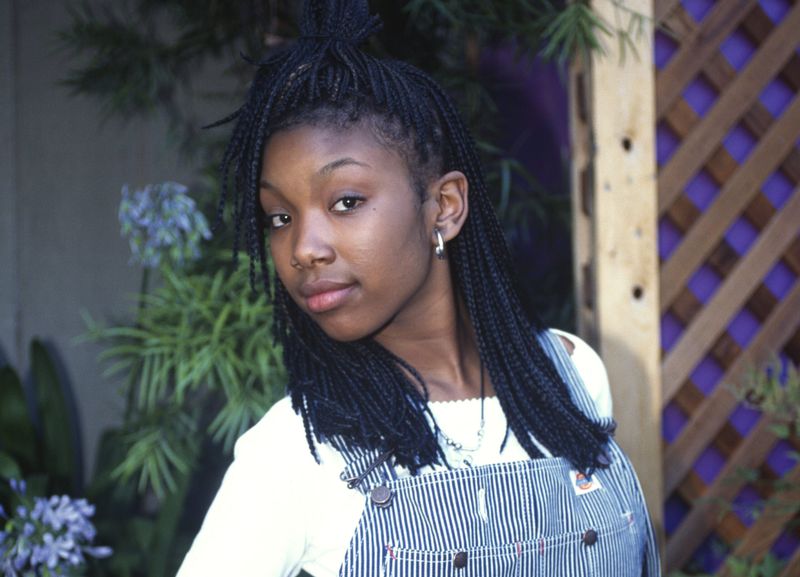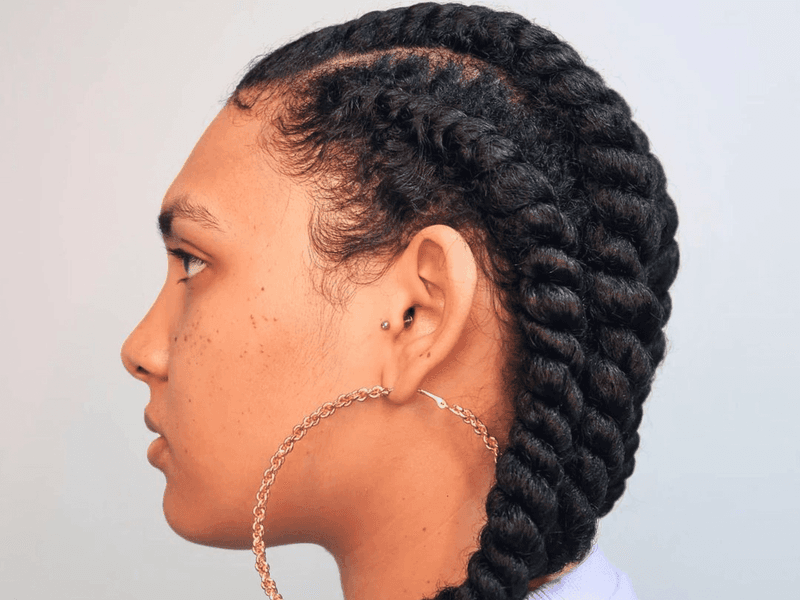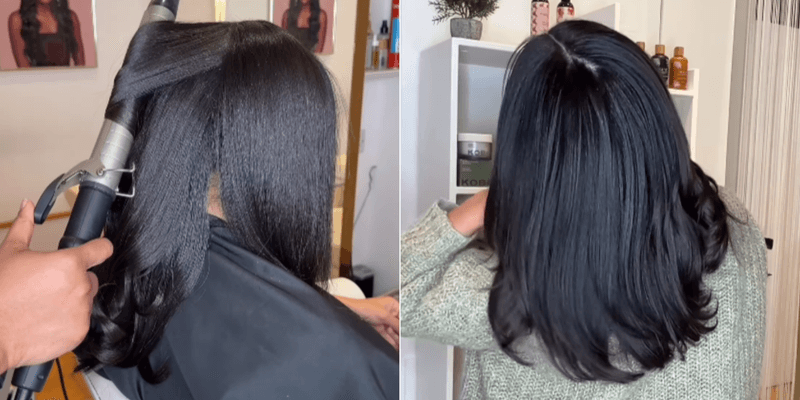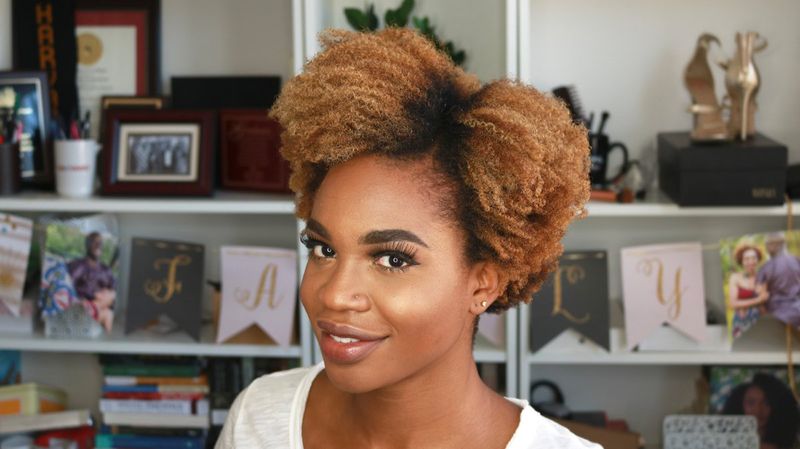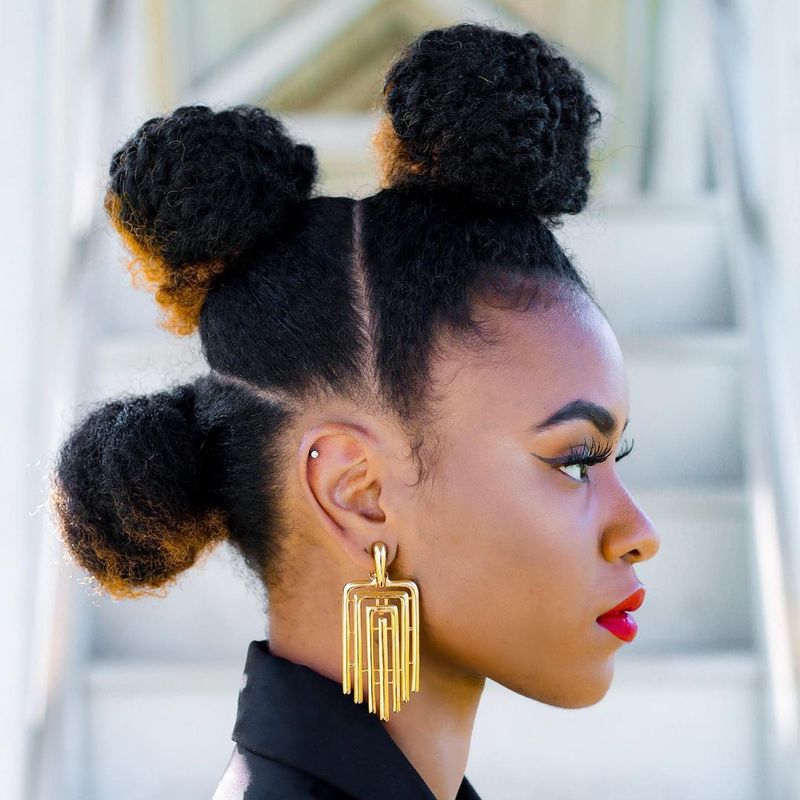Black hairstyles are more than just fashion statements—they’re powerful symbols of identity, resistance, and cultural pride. Throughout history, these distinctive styles have told stories of heritage, survival, and self-expression. From ancient African kingdoms to modern red carpets, Black hair traditions continue to influence global beauty standards while carrying deep historical significance.
1. Bantu Knots
Originally worn by Zulu women in southern Africa, these coiled buns represented age, social status, and tribal identity. Named after the Bantu people, this protective style has crossed oceans and centuries.
Today’s fashion world embraces what African women have known for generations—Bantu knots are both practical and beautiful.
2. Dreadlocks
Sacred and spiritual, dreadlocks trace back to ancient Egypt and Hindu sadhus. Rastafarians later adopted them as expressions of religious devotion and rejection of Babylon’s oppression.
Each loc carries years of growth and personal history. This natural hair journey represents patience, strength, and spiritual connection.
3. Afro
Rising to prominence during the Civil Rights and Black Power movements, the Afro became a radical symbol of rejecting European beauty standards. Natural hair stood proud as a political statement.
Angela Davis and her iconic Afro embodied resistance and Black pride. The style celebrated the natural texture that many had been taught to hide.
4. Tranças
Dating back at least 3000 years, cornrows appeared in Stone Age paintings in the Sahara. These intricate braids often mapped escape routes for enslaved people seeking freedom.
Beyond beauty, cornrows served as communication. Different patterns indicated tribal affiliation, age, marital status, and even hidden messages during times of oppression.
5. Tranças em caixa
Archaeological evidence from ancient Egypt shows women wearing these versatile, squared-off braids thousands of years ago. The style protected natural hair while showcasing incredible craftsmanship.
Janet Jackson’s role in ‘Poetic Justice’ catapulted box braids into 90s mainstream fashion. Today, they remain a beloved protective style blending ancient tradition with contemporary flair.
6. Jheri Curl
Chemically relaxed and glossed to perfection, the Jheri curl dominated Black hair fashion throughout the 1980s. Michael Jackson’s Thriller album cover immortalized this shiny, loose curl pattern.
Created by white hairstylist Jheri Redding, the style required constant maintenance with costly products—a testament to the economic exploitation often tied to Black beauty trends.
7. Fade
Barber artistry reached new heights with the fade—hair gradually “fading” from longer on top to shorter on sides. Born in Black barbershops, this precision cut became a canvas for creative expression.
Military regulations ironically helped popularize this style. Black servicemen adapted required short cuts into the stylish tapers that later influenced hip-hop culture’s aesthetic.
8. Finger Waves
Josephine Baker and other Harlem Renaissance icons popularized finger waves in the 1920s. Using fingers and styling tools to create ripple patterns, Black women transformed wet hair into elegant sculptures.
During an era of intense racial discrimination, these sophisticated styles allowed Black women to assert dignity and artistry. Finger waves later experienced revival in 90s hip-hop culture.
9. High-Top Fade
Kid of Kid ‘n Play fame rocked this gravity-defying flat-top variation that became synonymous with late 80s/early 90s hip-hop culture. The higher the top, the greater the status.
Barbers became celebrities through their ability to craft perfect high-tops. This architectural marvel required weekly maintenance, demonstrating dedication to fresh, clean presentation in urban communities.
10. Fulani Braids
Originating with the Fulani people of West Africa, these braids feature a central part with intricate patterns flowing backward. Gold accessories and cowrie shells traditionally adorned these elaborate styles.
Beyoncé’s “Formation” video brought renewed attention to Fulani braids. However, their geometric patterns and cultural significance stretch back centuries among nomadic Fulani women.
11. Twist Out
A cornerstone of the natural hair movement, twist-outs create defined curls without heat damage. Two-strand twists set overnight transform into voluminous, textured styles celebrating natural hair patterns.
YouTube tutorials democratized natural hair knowledge in the 2000s. Black women shared techniques their mothers and grandmothers had passed down, creating community around natural hair care.
12. Tranças de Deusa
Thicker than cornrows but following similar patterns, goddess braids elevate protective styling to art form status. These raised plaits often incorporate elegant swirls reminiscent of African sculptures and religious iconography.
Ancient Egyptian hieroglyphs depict similar styles, suggesting goddess braids’ connection to divine feminine energy. The name itself honors the spiritual significance Black women have long attributed to hair.
13. Conk
Before chemical relaxers, Black men used painful lye mixtures called “conks” to straighten their hair. Popular from the 1920s to 1960s, the style represented complex negotiations with white beauty standards.
Malcolm X famously described his conk as his “first step toward self-degradation.” His later rejection of the style for natural hair symbolized his political awakening and embrace of Black pride.
14. Sisterlocks
Developed in 1993 by Dr. JoAnne Cornwell, Sisterlocks offered a refined alternative to traditional locs. This patented technique creates tiny, uniform locs using precision tools and specialized training.
Sisterlocks addressed professional women’s desire for natural styles that challenged corporate discrimination. The technique’s popularity reflects the ongoing movement to embrace natural textures in all settings.
15. Patra Braids
Named after Jamaican dancehall artist Patra, these jumbo box braids dominated 90s Black hair fashion. Reaching waist-length or longer, these dramatic braids celebrated excess and bold femininity.
Caribbean influence on American Black hairstyles highlights the diaspora’s cultural exchange. Patra’s signature style represented the fusion of African braiding traditions with contemporary dancehall energy.
16. Flat Twists
Combining elements of cornrows and two-strand twists, flat twists lie close to the scalp while creating beautiful texture. This versatile technique works as both a finished style and setting method.
Ancient Nubians wore similar styles, as evidenced by archaeological findings. Today’s natural hair enthusiasts appreciate flat twists for their ability to define curl patterns without manipulation.
17. Silk Press
Evolving from hot combs and pressing oils used since the early 1900s, today’s silk press offers temporary straightening without harsh chemicals. Modern heat protectants and tools create sleek looks while minimizing damage.
Madame C.J. Walker built her fortune on hair pressing products. This contemporary technique honors her legacy while adapting to current health consciousness about chemical processes.
18. Sew-In Weave
Cornrow base braids with wefts of hair sewn onto them revolutionized protective styling. African hair braiding traditions merged with new techniques to create versatile, low-manipulation options for hair growth.
Black hair braiders transformed this craft into a multi-billion dollar industry. Their entrepreneurship created economic opportunities while preserving cultural knowledge passed through generations.
19. Wash and Go
Embracing natural curl patterns without manipulation defines this deceptively simple style. The natural hair movement championed this approach, emphasizing proper moisture and product distribution rather than control.
Though it sounds effortless, the perfect wash and go requires understanding one’s unique curl pattern. This knowledge represents reclamation of natural hair wisdom lost during generations of straightening.
20. Faux Hawk
Blending traditional African-inspired updos with punk rock edge, the faux hawk creates a mohawk illusion without shaving. Pioneered in Black communities, this versatile style balances boldness with professionalism.
Grace Jones popularized dramatic versions in the 1980s. Today’s variations range from subtle office-appropriate looks to elaborate red carpet statements, demonstrating Black hair’s incredible versatility.
